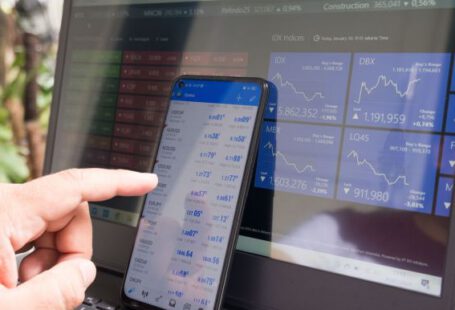Trading in the financial markets can be an exhilarating but challenging endeavor. To navigate this world successfully, traders need to arm themselves with the right tools and strategies. In this quick guide, we will explore some of the essential trading tools and how to master them.
1. Charting Software: A Trader’s Best Friend
One of the most critical tools for any trader is charting software. This software provides real-time market data and allows traders to analyze price movements and identify trends. By studying charts, traders can make informed decisions about when to enter or exit a trade. Popular charting software includes TradingView, MetaTrader, and Thinkorswim.
2. Moving Averages: Spotting Trends
Moving averages are useful indicators for identifying trends in the market. They smooth out price data over a specified period, providing traders with a clearer picture of the underlying trend. Traders often use the 50-day and 200-day moving averages to determine bullish or bearish market conditions.
3. Fibonacci Retracement: Predicting Price Levels
Fibonacci retracement levels are based on the mathematical sequence discovered by Leonardo Fibonacci. These levels help traders identify potential support and resistance levels in the market. By plotting the Fibonacci retracement levels on a chart, traders can anticipate price levels where the market may reverse or continue its trend.
4. Relative Strength Index (RSI): Gauging Market Momentum
The Relative Strength Index (RSI) is a popular momentum indicator used by traders to assess the strength and speed of price movements. It measures the ratio of upward to downward price movements and generates a value between 0 and 100. Traders typically look for overbought or oversold conditions to determine potential reversals or continuations in the market.
5. Risk Management Tools: Protecting Capital
Successful traders understand the importance of risk management. Tools such as stop-loss orders and position sizing calculators help traders protect their capital and limit potential losses. A stop-loss order automatically closes a trade if the price reaches a predetermined level, preventing further losses. Position sizing calculators help traders determine the appropriate amount of capital to allocate to a trade based on their risk tolerance.
6. Economic Calendar: Staying Informed
The economic calendar is a vital tool for traders as it provides information on upcoming economic events, such as central bank meetings, employment reports, and GDP releases. These events can have a significant impact on the financial markets, causing price volatility. By staying informed about these events, traders can anticipate market moves and adjust their strategies accordingly.
7. Trading Psychology: Mastering the Mind
While technical analysis tools are essential, mastering trading psychology is equally important. Emotional discipline and a rational mindset are crucial for success in the markets. Techniques such as meditation, journaling, and self-reflection can help traders develop the right mindset and overcome common psychological pitfalls, such as fear and greed.
In conclusion, mastering trading tools is a crucial step towards becoming a successful trader. Whether it’s charting software, moving averages, Fibonacci retracement, RSI, risk management tools, economic calendars, or trading psychology, each tool plays a significant role in a trader’s decision-making process. By understanding and utilizing these tools effectively, traders can enhance their trading strategies and increase their chances of success in the financial markets.





